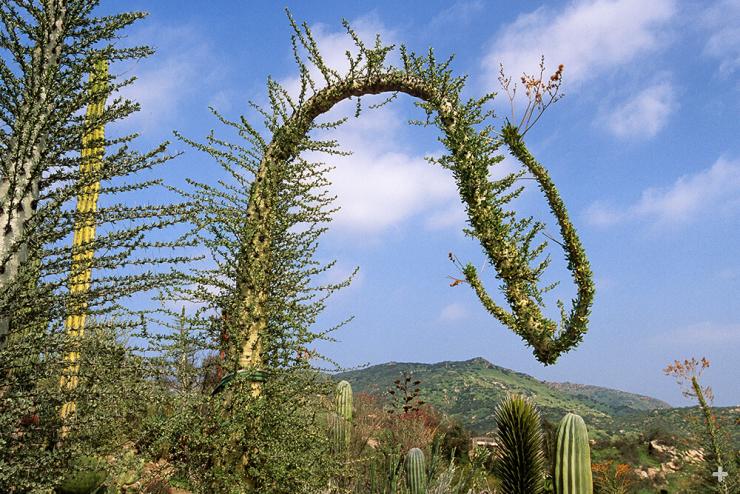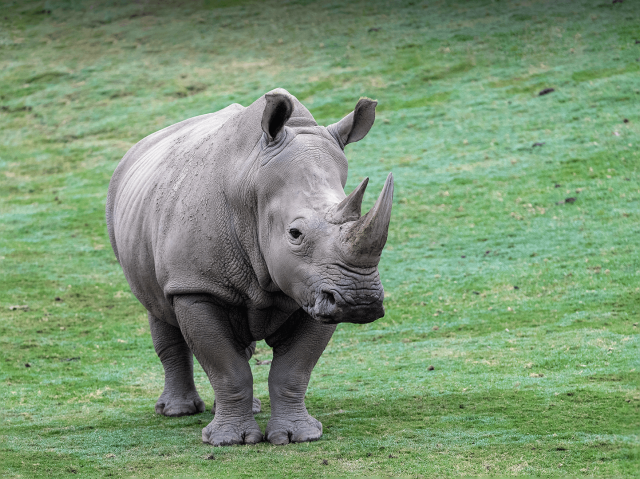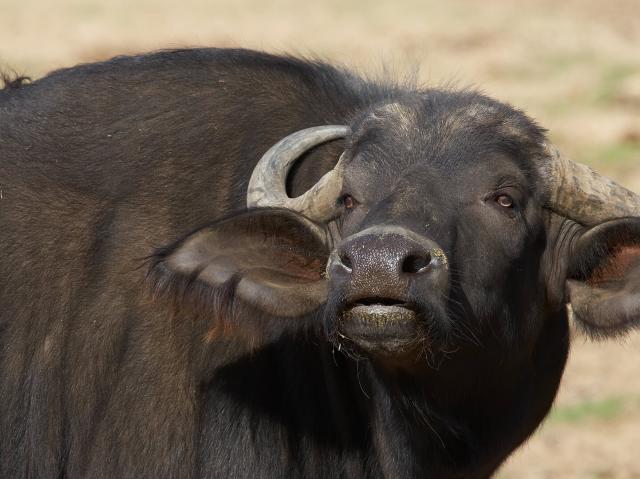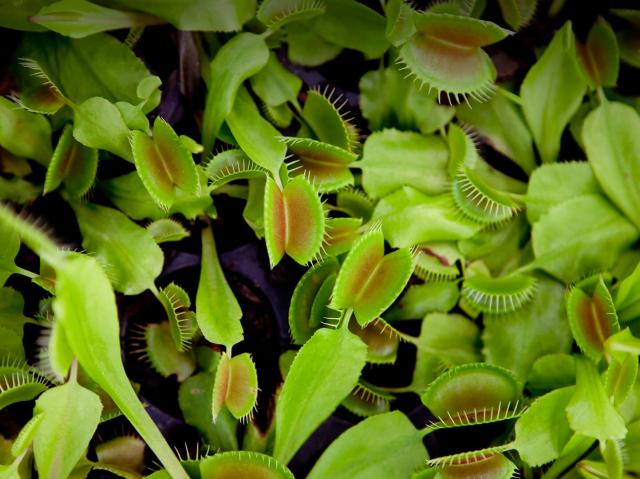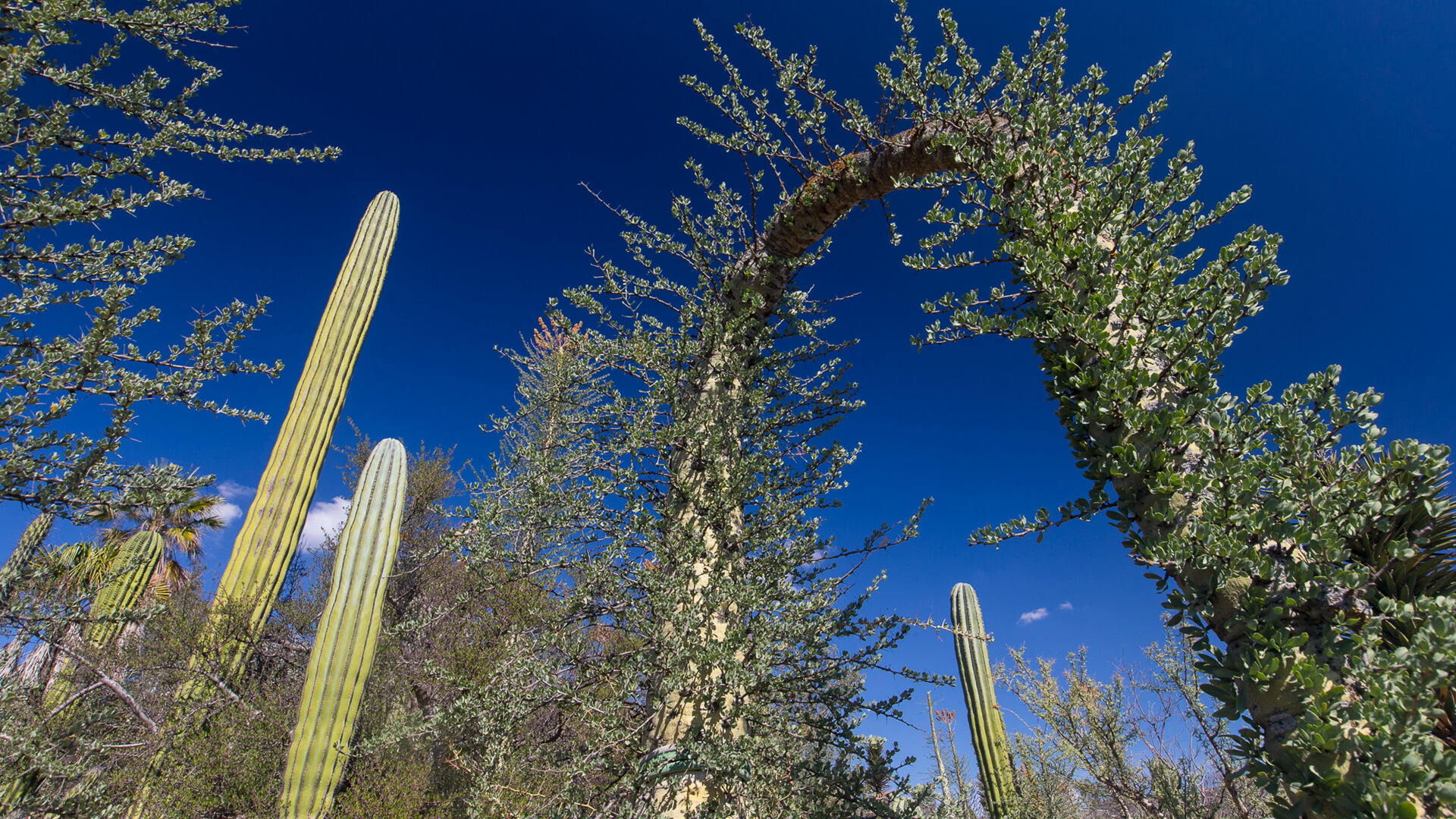
Boojum Tree

- DIVISION: Magnoliophyta (flowering plants)
- CLASS: Magnoliopsida (dicotyledons)
- ORDER: Ericales
- FAMILY: Fouquieriaceae
- GENUS: Fouquieria
- SPECIES: columnaris

OVERVIEW
Picture a tall light pole with sparse, short, spiky branches jutting out horizontally. This is the boojum: a tree-like succulent with a water-storing trunk and an array of spiny branches with tiny leaves. Although it's related to the slightly more familiar ocotillos, the boojum grows only in the mid-third of the Baja Peninsula and a small area on the coast of Sonora, Mexico, mostly in granite and volcanic soils.
Like ocotillos, the boojum is drought-deciduous: during dry seasons it remains leafless but then takes advantage of rainfall to sprout tiny leaves and a topknot of golden seedpods. It grows and flowers on less than 5 inches (12.7 centimeters) of rain per year.
Coastal fog probably helps a boojum with its water needs. In foggy areas, lichens and the air plant Tillandsia recurvata may grow on a boojum. A variety of insects pollinate the flowers.
CHARACTERISTICS

After a good rainfall, a cluster of new, tiny leaves sprouts from the base of each spike. The tiny leaves fall from the boojum when it can no longer provide them with sufficient water. In mature boojums, yellow flowers grow on stalks at the tips of the enormous plants between July and September.
GROWTH PATTERN
A boojum's stiff, woody trunk tapers from a fat base to a narrow tip; some people like to compare its shape to an upside-down carrot. Small spiked branches jut horizontally from this trunk. Sometimes the trunk forks into thick, large branches, which are usually erect but may loop and arc away from the main trunk.
A boojum can live for more than 300 years, and some experts have estimated the age of certain boojums to be more than 700 years old. A large boojum can reach 60 feet (18.3 meters) tall, but it gets there slowly—with adequate rain a boojum grows less than 2 inches (5 centimeters) each year.
CONSERVATION
The boojum tree is listed on CITES Appendix II, restricting international trade. Smugglers attempting to bring specimens into the US have been stopped at the US-Mexico border. San Diego Zoo Wildlife Alliance serves as a designated Plant Rescue Center and has accepted and nurtured many of these stolen boojums.
Two boojums propagated at the Safari Park are on loan to the San Diego Botanic Garden—an assurance population in the event of a disaster (such as a wildfire) that might wipe out the Park specimens.
OUR COLLECTION
The Safari Park's Baja Garden is home to more than 200 of these otherworldly plants, making this the largest collection of boojums outside their native habitat. Many of the boojums were legally collected from Mexico in 1988. Others were propagated at the Safari Park.
San Diego Zoo Wildlife Alliance seed bank experts worked with the Safari Park's horticulturists to gather and bank the seeds of these boojums, and the horticulture department has been able to propagate new individuals from seed. Nursery-propagated boojums are legal to sell, and Park horticulturists have been so successful propagating them that small boojums are sometimes offered for sale at the Plant Trader shop near the Safari Park entrance.
CULTIVATION
Boojums grow best in very dry climates where they have plenty of room to spread their spiny branches. It can take 50 to 100 years for a boojum to mature and flower.
SNARKS?
Botanical explorer Godfrey Sykes whimsically bestowed the name "boojum" on this plant. He took the name from Lewis Carroll's poem "The Hunting of the Snark." In the poem, a boojum is a mysterious form the snark takes, and anyone who looks at the boojum disappears.
CIRIO
In Mexico, lthe boojum is called cirio, the Spanish word for a taper candle, which it especially resembles when its flame-colored flower stalk bursts into bloom.
DRY IS OK
A boojum can get by on less than 5 inches (12.7 centimeters) of rain per year.


